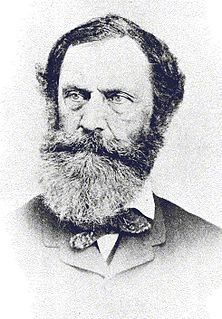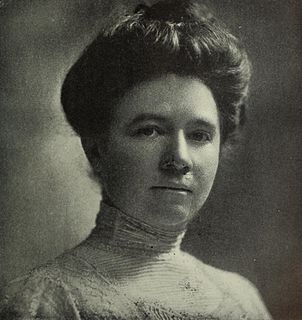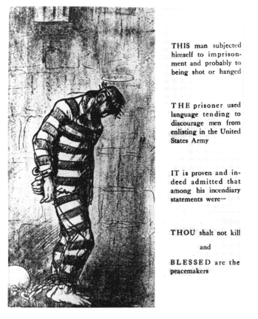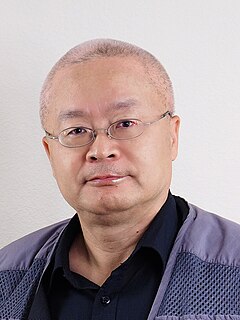
Infant baptism is the practice of baptising infants or young children. In theological discussions, the practice is sometimes referred to as paedobaptism, or pedobaptism, from the Greek pais meaning "child". This can be contrasted with what is called "believer's baptism", which is the religious practice of baptising only individuals who personally confess faith in Jesus, therefore excluding underage children. Opposition to infant baptism is termed catabaptism. Infant baptism is also called christening by some faith traditions.

The Community of Christ, known from 1872 to 2001 as the Reorganized Church of Jesus Christ of Latter Day Saints (RLDS), is an American-based international church, and is the second-largest denomination in the Latter Day Saint movement. The church reports 250,000 members in 1,100 congregations in 59 countries. The church traces its origins to Joseph Smith's establishment of the Church of Christ on April 6, 1830. A group of members including his eldest son Joseph Smith III formally established the current church on April 6, 1860 in the aftermath of the 1844 death of Joseph Smith.

James Morris Lawson, Jr. is an American activist and university professor. He was a leading theoretician and tactician of nonviolence within the Civil Rights Movement. During the 1960s, he served as a mentor to the Nashville Student Movement and the Student Nonviolent Coordinating Committee. He was expelled from Vanderbilt University for his Civil Rights activism in 1960, and later served as a pastor in Los Angeles, California, for 25 years.

Thomas Green Clemson was an American politician and statesman, serving as an ambassador and the United States Superintendent of Agriculture. He served in the Confederate States Army. He founded Clemson University in South Carolina.

The Mormon pioneers were members of The Church of Jesus Christ of Latter-day Saints, also known as Latter-day Saints, who migrated in the mid-1840s across the United States from the Midwest to the Salt Lake Valley in what is today the U.S. state of Utah. At the time of the planning of the exodus in 1846, the territory was owned by the Republic of Mexico, which soon after went to war with the United States over the annexation of Texas. The Salt Lake Valley became American territory as a result of this war.
Spiritual ecology is an emerging field in religion, conservation, and academia recognizing that there is a spiritual facet to all issues related to conservation, environmentalism, and earth stewardship. Proponents of Spiritual Ecology assert a need for contemporary conservation work to include spiritual elements and for contemporary religion and spirituality to include awareness of and engagement in ecological issues.
Second-order cybernetics, also known as the cybernetics of cybernetics, is the recursive application of cybernetics to itself. It was developed between approximately 1968 and 1975 by Margaret Mead, Heinz von Foerster and others. Von Foerster referred to it as the cybernetics of "observing systems" whereas first order cybernetics is that of "observed systems". It is sometimes referred to as the "new cybernetics", the term preferred by Gordon Pask, and is closely allied to radical constructivism, which was developed around the same time by Ernst von Glasersfeld. While it is sometimes considered a radical break from the earlier concerns of cybernetics, there is much continuity with previous work and it can be thought of as the completion of the discipline, responding to issues evident during the Macy conferences in which cybernetics was initially developed. Its concerns include epistemology, ethics, autonomy, self-consistency, self-referentiality, and self-organizing capabilities of complex systems. It has been characterised as cybernetics where "circularity is taken seriously".

Thomas Berry, CP, PhD was a cultural historian and scholar of the world’s religions, especially Asian traditions. Later as he studied Earth history and evolution, he called himself a “geologian.” He rejected the label “theologian” or “ecotheologian” as too narrow and not descriptive of his cultural studies in history of religions. He was drawn early on to respond to the growing ecological and climate crisis and proposed the need for a "New Story" of evolution in 1978. In this essay he suggested that a deep understanding of the history and functioning of the evolving universe is a necessary inspiration and guide for our own effective functioning as individuals and as a species.

Martha McChesney Berry was an American educator and the founder of Berry College in Rome, Georgia.

People of Praise is a charismatic Christian parachurch organization that provides community, spiritual direction, and opportunities for service to its members. It is not a church or denomination, and membership is open to any baptized Christian who affirms the Nicene Creed and agrees to the community's covenant. The majority of its members are Catholics, but Protestants can also join. It has 21 branches in the United States, Canada, and the Caribbean, with approximately 3,000 members including children. It founded a group of nondenominational Christian schools, Trinity Schools.

Christian pacifism is the theological and ethical position that any form of violence is incompatible with the Christian faith. Christian pacifists state that Jesus himself was a pacifist who taught and practiced pacifism and that his followers must do likewise. Notable Christian pacifists include Martin Luther King, Jr., Leo Tolstoy, and Ammon Hennacy. Hennacy believed that adherence to Christianity required not just pacifism but, because governments inevitably threatened or used force to resolve conflicts, anarchism. However, most Christian pacifists, including the peace churches, Christian Peacemaker Teams and individuals such as John Howard Yoder, make no claim to be anarchists.
Management cybernetics is the application of cybernetics to management and organizations. "Management cybernetics" was first introduced by Stafford Beer in the late 1950s. Beer developed the theory through a combination of practical applications and a series of influential books. The practical applications involved steel production, publishing and operations research in a large variety of different industries. Some consider that the full flowering of management cybernetics is represented in Beer's books. However, learning continues.

Mental prayer is a form of prayer recommended in the Catholic Church whereby one loves God through dialogue, meditating on God's words, and contemplation of Christ's face. It is distinguished from vocal prayers which use set prayers, although mental prayer can proceed by using vocal prayers in order to improve dialogue with God. And no prayer is purely vocal, as it has traditionally been defined: "Prayer is the raising of one's mind and heart to God."

Cybernetics is a transdisciplinary approach for exploring regulatory systems—their structures, constraints, and possibilities. Norbert Wiener defined cybernetics in 1948 as "the scientific study of control and communication in the animal and the machine".
Pope John Paul II worked to improve relations between the Roman Catholic Church and Judaism. He built solid ties with the Jewish community in the hope of promoting Christian–Jewish reconciliation.
Glenn Smiley was a white civil rights consultant and leader. He closely studied the doctrine of Mahatma Gandhi and became convinced that racism and segregation were most likely to be overcome without the use of violence, and began studying and teaching peaceful tactics. As an employee of the Fellowship of Reconciliation (FOR), he visited Martin Luther King, Jr. in Montgomery, Alabama in 1956 during the Montgomery bus boycott where Smiley advised King and his associates on nonviolent tactics, and was able to convince King that nonviolence was a feasible solution to racial tension. Smiley, together with Bayard Rustin and others, helped convince King and his associates that complete nonviolence and nonviolent direct action were the most effective methods and tools to use during protest. After the Civil Rights Movement, Smiley continued to employ nonviolence and worked for several organizations promoting peace in South American countries. Just three years before his 1993 death, Smiley opened the King Center in Los Angeles.

John H. Eastwood was an author, seminary professor, army chaplain, and church pastor in the United States. He grew up in rural Nebraska and earned a Doctor of Divinity from Princeton Theological Seminary in 1941. He served in the United States Army 464th Bombardment Group during World War II, starting at Herington Army Airfield and later in Italy. His final position was as the pastor of Covenant Presbyterian Church in Hammond, Indiana, a church that he led to triple in size during his leadership.
Kenneth M. Sayre is an American philosopher who spent most of his career at the University of Notre Dame (ND). His early career was devoted mainly to philosophic applications of artificial intelligence, cybernetics, and information theory. Later on his main interests shifted to Plato, philosophy of mind, and environmental philosophy. His retirement in 2014 was marked by publication of a history of ND's Philosophy Department, Adventures in Philosophy at Notre Dame.
Laurence Dale Richards was a key figure in the modern development of cybernetics as a transdisciplinary field of inquiry, often referred to as the new cybernetics. He was the first to create interdisciplinary masters and doctoral programs in engineering management, with curricula built explicitly on concepts drawn from systems theory and cybernetics. He served as President for both the American Society for Cybernetics (1986–88) and the American Society for Engineering Management (1998–99) and was elected an Academician in the International Academy for Systems and Cybernetic Sciences in 2010.

Jason Jixuan Hu, is a Chinese American cyberneticist, independent scholar and managing director of WINTOP Organizational Learning Laboratory. He is noted for his work on "cognitive capacity in human communication, conflict resolution and cooperation solicitation," and on view on distance education in America.












